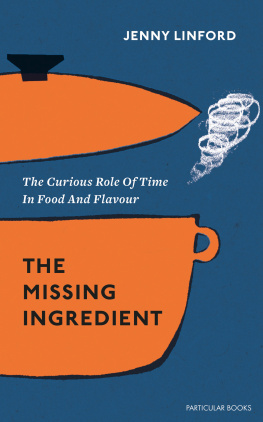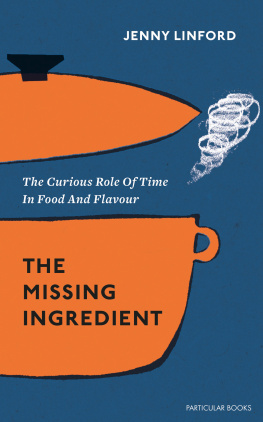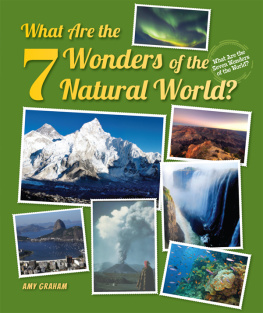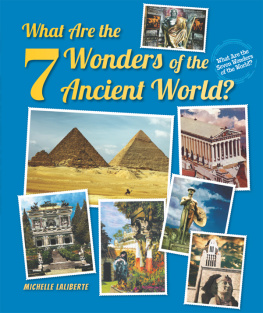Jenny Linford - The Seven Culinary Wonders of the World
Here you can read online Jenny Linford - The Seven Culinary Wonders of the World full text of the book (entire story) in english for free. Download pdf and epub, get meaning, cover and reviews about this ebook. year: 2018, publisher: White Lion Publishing, genre: Home and family. Description of the work, (preface) as well as reviews are available. Best literature library LitArk.com created for fans of good reading and offers a wide selection of genres:
Romance novel
Science fiction
Adventure
Detective
Science
History
Home and family
Prose
Art
Politics
Computer
Non-fiction
Religion
Business
Children
Humor
Choose a favorite category and find really read worthwhile books. Enjoy immersion in the world of imagination, feel the emotions of the characters or learn something new for yourself, make an fascinating discovery.

- Book:The Seven Culinary Wonders of the World
- Author:
- Publisher:White Lion Publishing
- Genre:
- Year:2018
- Rating:3 / 5
- Favourites:Add to favourites
- Your mark:
- 60
- 1
- 2
- 3
- 4
- 5
The Seven Culinary Wonders of the World: summary, description and annotation
We offer to read an annotation, description, summary or preface (depends on what the author of the book "The Seven Culinary Wonders of the World" wrote himself). If you haven't found the necessary information about the book — write in the comments, we will try to find it.
The Seven Culinary Wonders of the World — read online for free the complete book (whole text) full work
Below is the text of the book, divided by pages. System saving the place of the last page read, allows you to conveniently read the book "The Seven Culinary Wonders of the World" online for free, without having to search again every time where you left off. Put a bookmark, and you can go to the page where you finished reading at any time.
Font size:
Interval:
Bookmark:
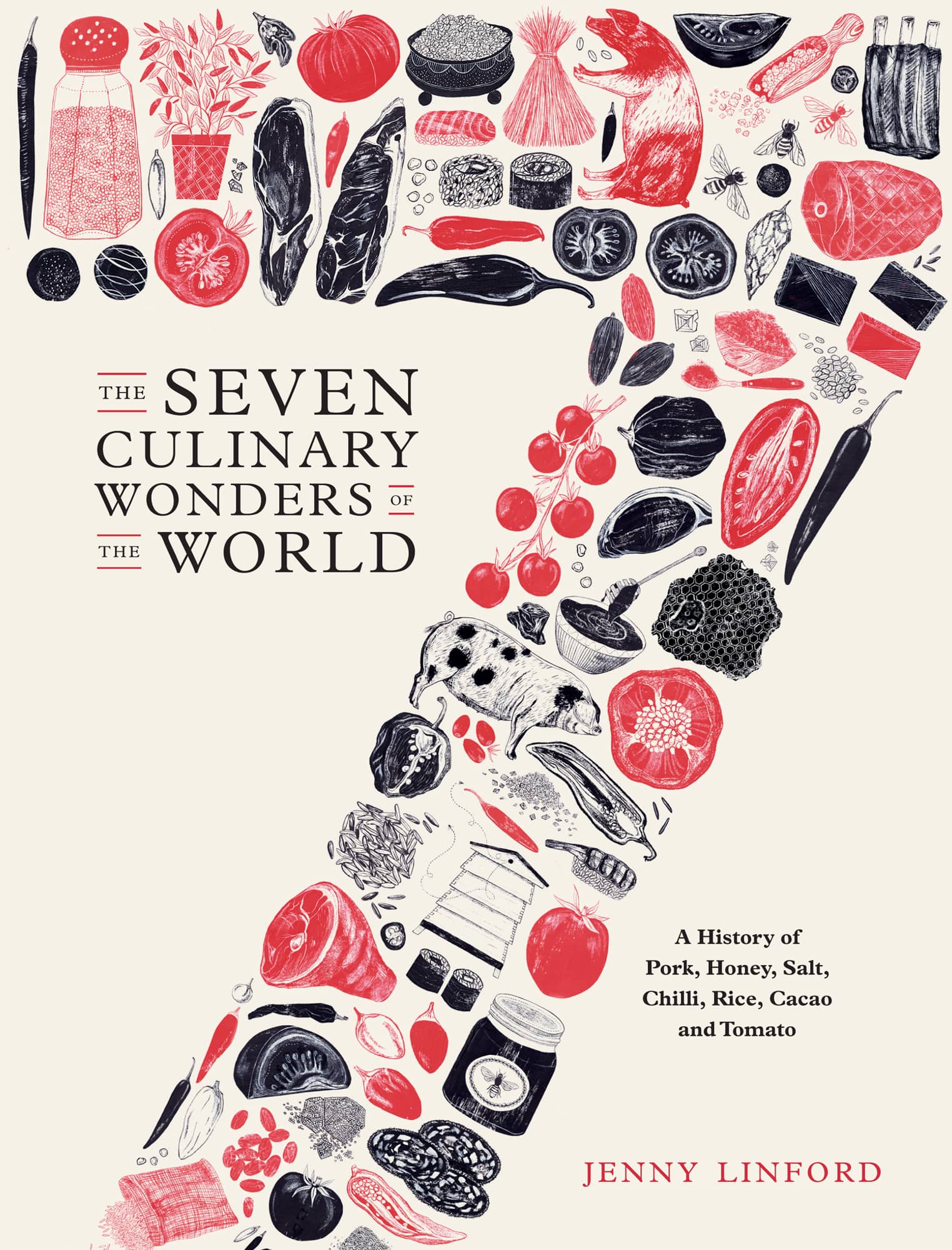
WONDERS OF THE WORLD
Pork, Honey, Salt, Chilli, Rice, Cacao and Tomato
JENNY LINFORD
ILLUSTRATED BY
ALICE PATTULLO


The ingredients we eat every day play a special part in our lives. To begin with, we have an intimate relationship with them, consuming them in order to sustain our bodies physically. Our relationship with key ingredients we eat today is in many cases a long one, developed over thousands of years. These are foods that over their history as part of the human diet, have acquired cultural and religious values and taken on symbolic and superstitious meanings.
The seven foods explored in this book are ones that we now take for granted. Pork is, nowadays, a commonplace meat, widely found in various forms, whether bacon strips and sausage patties served for a caf breakfast, the ham sandwich eaten for a quick lunch by office workers or the hot dog, devoured while watching a baseball game. Honey, bought in jars from supermarkets, is enjoyed for its sweetness, drizzled over pancakes in the morning or blitzed into fruit smoothies. Salt is cheap and ubiquitous, placed on our tables so that we can season our food to taste. In the world of food manufacturing, salt is one of the most widely used additives. It is used as a flavour enhancer to increase the tastiness of processed foods and also for its preservative effects. While we expect it in overtly salty foods such as crisps, its also, more surprisingly, present in other everyday manufactured foods, such as bread, tomato ketchup and cakes. Around the globe, chillies are used to zip up dishes from beef tacos to curries a handy way of adding heat. Rice is now a store-cupboard staple, a filling carbohydrate that can conveniently be stored and cooked when needed. Made from cacao, chocolate confectionery in the developed world is affordable and widely available, found in petrol stations and supermarkets. Chocolate bars are bought, almost absentmindedly, as a sweet treat, devoured in minutes. From the slices of firm-fleshed, bland fresh tomatoes found in salads, sandwiches and burgers to passata-topped pizzas, tomatoes, too, are widely present in our diet. These are now foods that we barely think about.
All of them, however, are remarkable ingredients in their own right, with fascinating stories behind them. Furthermore, they are foods that have travelled the world, reflecting our omnivorous curiosity as a species. Alongside an understandable wary resistance to new foods, there has also been a human willingness to experiment to plant, for example, seeds of exotic plants such as chillies, rice or tomatoes, brought on long sea voyages from the other side of the world. The international range of recipes within this book Malaysian nasi goreng, Italian sugo al pomodoro, Portuguese salt cod croquettes, Chinese char siu, North American brownies, Greek baklava, Israeli zhoug reflects this open-minded interest in food and the way in which our seven ingredients have travelled the globe and become an intrinsic part of many national cuisines.
Tracing the histories of these foods makes it clear what an ingenious and curious species human beings are. We have acted upon the natural world we found ourselves in, using its resources and shaping them in order to nourish our population. Salt was found in the sea and the land. Wild animals and birds among them pigs, sheep, cattle and chickens have been domesticated to provide us with meat, milk, wool, fertiliser and leather. Wild plants often initially unprepossessing and hard to cultivate have been bred over generations to have traits we consider desirable, such as good flavour and texture, higher yields, disease resistance and ease of harvesting. We even developed a way of working with bees, in order to be able to gather their honey easily and safely.
Among the earliest animals to be domesticated is the pig, descended from wild swine. In the ancient world, there was considerable respect for the pigs wild ancestors. Powerful, fierce wild boars charge ferociously through ancient Greek and Roman myths, Celtic legends and Arthurian tales. The domestic pigs ability to scavenge for food and fend for itself until slaughtered, however, made it a useful animal to keep. Pork is the worlds most consumed meat, yet, fascinatingly, also considered taboo by two major religions, namely Judaism and Islam. The killing of a pig in rural communities around the world was often an annual event, celebrated with a special feast of fresh pork, a rare treat, eaten with relish on that occasion. It is in the world of charcuterie that pork comes into its own, the ample flesh enjoyed in many diverse forms, from fresh sausages to preserved hams and salamis.
Honey is humankinds first sweetener. Collected from the hives of wild bees, it has been eaten for thousands of years. The earliest depiction of humankinds appetite for honey is a cave painting of a human being collecting honey, dating from 8,000 to 10,000 years ago. Sweetness is one of the five fundamental tastes our tongues recognise and we are biologically programmed to like it. Honey was for centuries considered something wondrous, seen in many cultures around the world as a gift from the gods. Beekeeping to this day continues to interest people, a fact linked to our respect for bees and fascination with the complex workings of their colonies.
Salt is needed by our bodies, so it is vital for life. Saltiness, like sweetness, is one of the five tastes our tongues recognise, a key flavouring that we crave. For several centuries, salt was very valuable indeed. Such was its economic importance that, famously, the word salary derives from the Latin sal for salt. It is a mineral that humans extracted with much work, either from the sea through the process of evaporating brine or as rock salt, hewn from the ground with hard, physical labour. As well as being used as a seasoning, salt is essential for making many of our great preserved foods, from ham and cheese to pickled and fermented foods, such as kimchi or soy sauce.
Chillies, thought to originate from Bolivia in South America, are today cultivated around the globe. It is estimated that around one-quarter of the worlds population eat chillies in some form every day. Compounds called capsaicinoids contained within chillies, particularly in the seeds and the surrounding tissue, are what cause that unique chilli burn. Fascinatingly, rather than avoiding a fruit with this punishing effect, human beings have instead sought it, relishing that heat sensation. Following the Spanish invasion of Mesoamerica, chillies were spread through trading routes and introduced to other parts of the world, including Europe, Africa, India and Southeast Asia. An extensive use of chillies is now a trademark of a number of cuisines, notably Mexican, Indian and Thai. We continue to be fascinated by the heat effects of chillies, growing new cultivars that now reach extraordinary, record-breaking levels of ferocious hotness.
Despite its ubiquity as confectionery in the developed world, chocolate made from cacao retains a sheen of glamour and is still seen as a treat. Its history as a supposed aphrodisiac resonates in its current popularity as a St Valentines Day gift for lovers. Cacao is native to the Americas, highly valued by the historic Olmec, Mayan and Aztec civilisations, by whom it was used as a currency and required as a tribute. Drinks made from ground cacao beans were made with great care and drunk by the privileged elite of Mayan and Aztec societies. It was through the Spanish conquistadors and their invasion of Mesoamerica that cacao was introduced to the continent of Europe and other parts of the world. For most of its history, cacao was consumed as a beverage rather than a food. It was the Industrial Revolution and the development of particular machinery that allowed the beans to be processed and transformed into eating chocolate with the smooth texture we now expect from it.
Font size:
Interval:
Bookmark:
Similar books «The Seven Culinary Wonders of the World»
Look at similar books to The Seven Culinary Wonders of the World. We have selected literature similar in name and meaning in the hope of providing readers with more options to find new, interesting, not yet read works.
Discussion, reviews of the book The Seven Culinary Wonders of the World and just readers' own opinions. Leave your comments, write what you think about the work, its meaning or the main characters. Specify what exactly you liked and what you didn't like, and why you think so.

